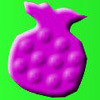Links to the University of Cambridge website
 Links to the NRICH website Home page
Links to the NRICH website Home page

 Links to the NRICH website Home page
Links to the NRICH website Home page

Nurturing young mathematicians: teacher webinars
30 April (Primary), 1 May (Secondary)
30 April (Primary), 1 May (Secondary)
Resources tagged with: Making and testing hypotheses
There are 3 results
Broad Topics > Handling, processing and representing data > Making and testing hypotheses
Problem
Primary curriculum
Secondary curriculum

Statistical Shorts
Can you decide whether these short statistical statements are always, sometimes or never true?
Age 11 to 16
Challenge Level 





Problem
Primary curriculum
Secondary curriculum

Reaction Timer
This problem offers you two ways to test reactions - use them to investigate your ideas about speeds of reaction.
Age 11 to 14
Challenge Level 





Problem
Primary curriculum
Secondary curriculum

In the Bag
Can you guess the colours of the 10 marbles in the bag? Can you develop an effective strategy for reaching 1000 points in the least number of rounds?
Age 11 to 14
Challenge Level 




